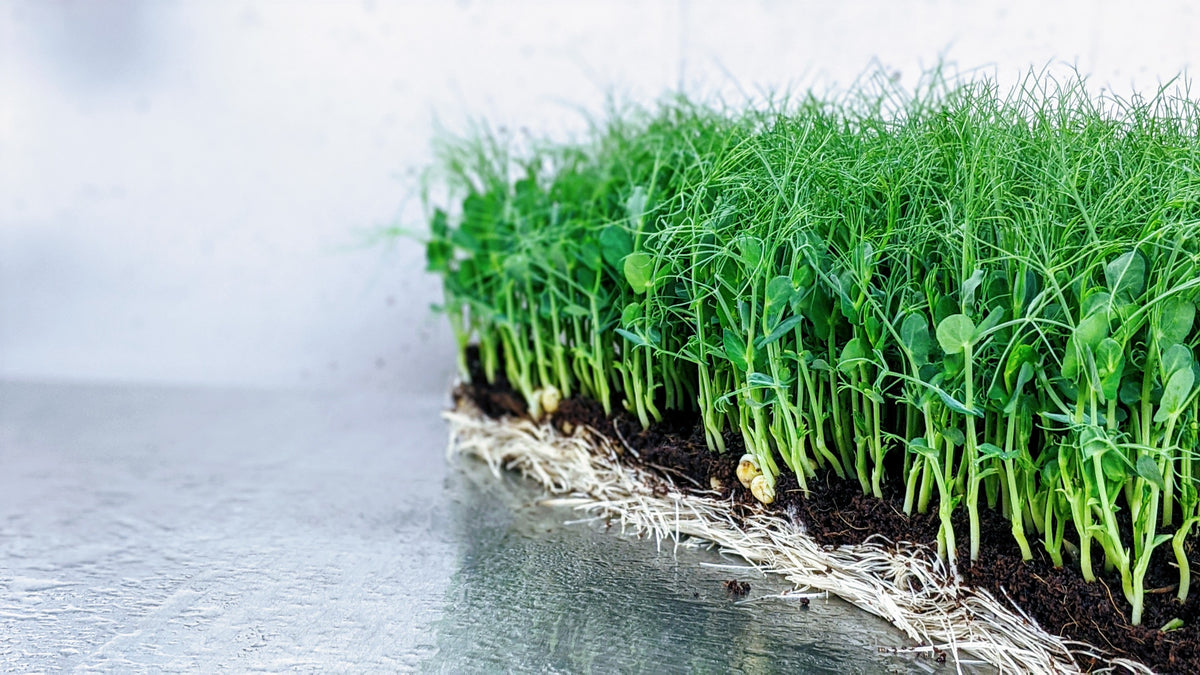20 Rare Varieties. Zero Fillers.
MiracleMicrogreens™ delivers the biodiversity of 20 rare microgreen varieties in a single, ultra-clean powder. Grown indoors to eliminate soil contaminants, every batch is lab-verified to be hundreds of times cleaner than strict California Prop 65 limits for heavy metals. We use our proprietary Cold-Raw-Freeze-Dry Process™ to lock in the living enzymes and delicate phytonutrients that standard commercial drying destroys - giving you raw, whole-plant nutrition without the toxins.

Why 20 Varieties? Because Common Varieties Aren't Enough.
Most brands stop at broccoli and kale. We didn't. Here is why biodiversity matters.
Biodiversity is Biological Power.
Nature doesn't rely on just one plant, and neither should you. While others rely on the same 3 or 4 cheap ingredients, or common microgreen varieties, we blend 20 distinct varieties to deliver a complete spectrum of phytonutrients, enzymes, and antioxidants that no single vegetable can provide alone.
Precision-Blended for Synergy.
We didn't just pick plants at random. We analyzed the phytochemical profiles of the 20 most potent microgreens and blended them in precise proportions. This creates an "Entourage Effect" where the nutrients in one variety (like Vitamin C in Broccoli) amplify the absorption of nutrients in another (like Iron in Amaranth).
Rare Superfoods You Can’t Buy Elsewhere.
Grocery stores and manufacturers are stuck with basic microgreens because rare varieties are impossible to source at scale. We solve this. We grow and freeze-dry rare varieties - like Watercress, Collard Greens, Cauliflower, Amaranth, etc. - that are physically unavailable to the average consumer.
Our 20 Carefully Selected Ingredients
Each variety chosen for its unique nutritional profile and health benefits
Pea Shoot Microgreens
The Energy Builder
Complete plant protein packed with folate and antioxidants. Supports sustained energy, healthy metabolism, and immune defense without the crash of caffeine.
Sunflower Shoot Microgreens
The Skin & Cell Protector
Rich in Vitamin E and Zinc, sunflower shoots are famous for supporting skin elasticity and protecting cells from daily wear and tear.
Fava Bean Shoot Microgreens
The Cognitive Helper
A potent natural source of amino acids known to support focus, motivation, and mental clarity. Ideally suited for "brain fog" days.
Broccoli Microgreens
The Supergreen Classic
The world’s most famous microgreen. Contains high levels of sulforaphane precursors to support your body’s natural detoxification pathways and cellular defense systems.
Kale Microgreens
The Superfood Classic
More potent than mature kale. Loaded with beta-carotene for vision support and Vitamin K for bone strength. A foundational pillar of health.
Red Cabbage Microgreens
The Antioxidant Powerhouse
The vivid purple color comes from Anthocyanins—powerful antioxidants that support heart health and healthy inflammation response.
Collard Greens Microgreens
The Immune Supporter
Packed with calcium and immune-supporting compounds. Traditionally used to support bone density and overall resilience.
Daikon Radish (Green) Microgreens
The Digestive Aid
Known for its crisp, spicy kick, Daikon is rich in enzymes that support healthy digestion and skin clarity.
Purple Radish Microgreens
The Cellular Watchdog
Combines the spice of radish with the antioxidant power of purple pigments. Supports thyroid function and vigorous immune response.
Tatsoi Microgreens
The Nutrient Dense Spinach
A relative of spinach but far more nutrient-dense. Delivers essential flavonols for muscle function and recovery.
Purple Kohlrabi Microgreens
The Metabolic Spark
Distinguished by its vibrant color and Vitamin B6 content. Supports healthy metabolism, mood stability, and nerve function.
Arugula Microgreens
The Potency Punch
Famous for its peppery bite, which signals high levels of dietary nitrates. Excellent for supporting healthy blood flow and circulation.
Amaranth Microgreens
The Ancient Grain Green
Stunning red leaves packed with Lysine (a rare protein building block) and Iron. Supports oxygen transport and energy levels.
Cauliflower Microgreens
The Liver Supporter
A cruciferous powerhouse rich in Choline, a key nutrient for liver function and brain health that most diets lack.
Rutabaga Microgreens
The Balance Keeper
Provides a unique profile of Vitamin E and potassium to support electrolyte balance and cellular hydration.
Brussels Sprouts Microgreens
The Cellular Repair Agent
Contains specific compounds that support the body’s natural tissue repair processes and antioxidant systems.
Turnip Microgreens
The Growth Factor
Rich in Folate and Calcium, these greens are essential for supporting cell growth, bone maintenance, and immune health.
Romaine Lettuce Microgreens
The Hydration Hero
Far more nutritious than the mature lettuce in a salad. Supports electrolyte balance and muscle function.
Chia Microgreens
The Heart Helper
Packed with plant-based Omega-3s (Alpha-linolenic acid). Vital for supporting heart health and cognitive function.
Watercress Microgreens
The Nutrient Density Champion
Often ranked #1 on the CDC’s powerhouse fruit and vegetable list. Supports blood vessel health and deep cellular nutrition.
Why 20? Diversity Without Dilution.
Most greens powders fall into two traps: they either offer too few ingredients (missing out on biodiversity) or they stuff 75+ ingredients into a jar to make the label look impressive (an industry trick called "fairy dusting," where you get trace amounts of everything and potency of nothing).
We refuse to play that game.
MiracleMicrogreens™ hits the biological sweet spot. 20 varieties of pure microgreens provide the broad-spectrum plant diversity your body needs, but we cap it there to ensure every single ingredient remains at a substantial, bioactive dose. You get the variety of a farmer's market, with the potency of a targeted supplement.
